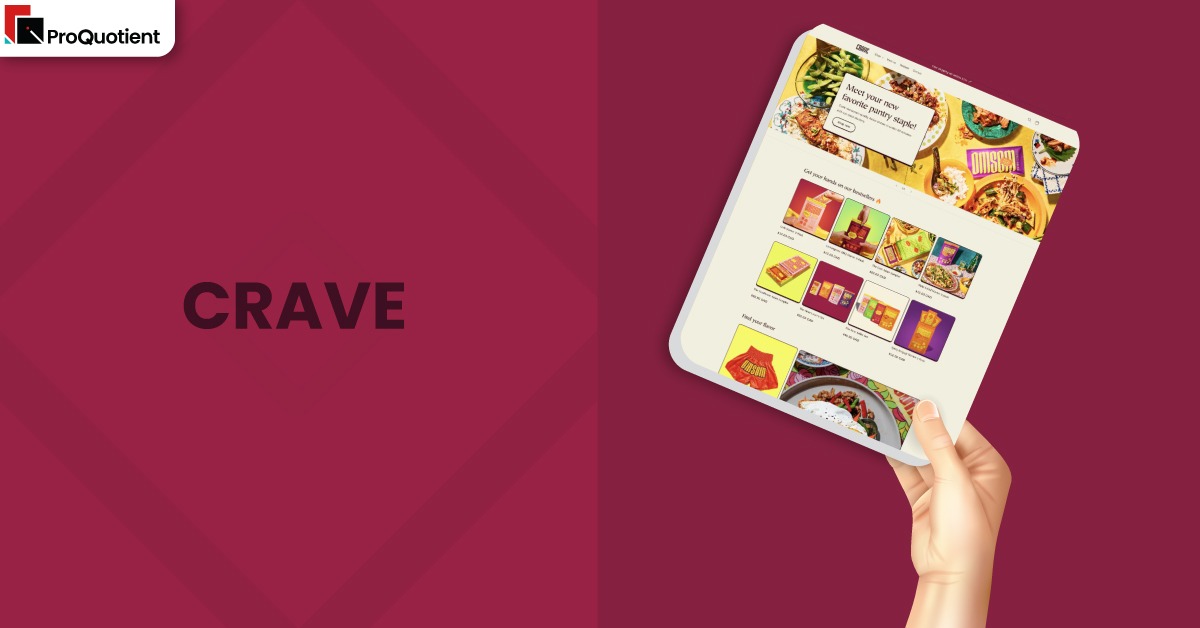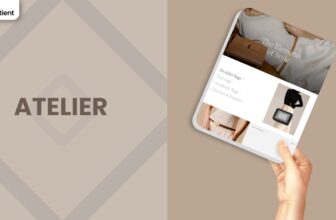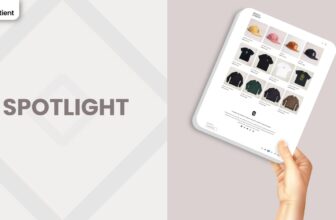Crave Shopify Theme Review: Fun, Familiar And Surprisingly Versatile

A playful FREE theme that favours clarity and stability over flash, ideal for everyday brands that want a friendly storefront.
Introduction
Crave is one of Shopify’s established free Online Store 2.0 themes, designed to give smaller merchants a colourful, approachable storefront without demanding heavy design skills. Instead of experimental layouts or complex animation, it focuses on simple structure, bright accents, and clear typography that feel at home on food, lifestyle, and everyday consumer brands. Merchants have been running stores on it for years, using it for everything from author sites to women’s fashion and speciality food shops.
Crave Shopify Theme has gained a reputation as a dependable workhorse with a few limitations rather than a cutting edge experiment. Users appreciate its smooth behaviour and straightforward configuration, but often wish for more variant image control, better metafield display on collection pages, and richer per page customisation. Overall, it occupies a sweet spot for merchants who want a friendly, professional look with minimal surprises and who do not mind leaning on metafields or light customisation for advanced use cases. The summary table below captures the key points.
| Summary of Crave Shopify Theme |
|---|
| Established free theme with a playful, approachable aesthetic suited to everyday consumer brands. |
| Generally stable and smooth in production, with multiple merchants running it successfully over several years. |
| Template system and metafield reliance can be confusing at first, especially for differentiated product content. |
| Lacks some advanced UX touches like multiple images per variant and automatic size or colour meta display on grids. |
| Body text opacity and typography defaults are readable but sometimes criticised for being slightly too faint. |
| Best for merchants who want a cheerful, reliable theme and are comfortable adding metafields or small tweaks over time. |
Ideal For Niches With Supporting Features
Crave is designed to feel friendly, colourful, and accessible, which makes it a strong fit for brands selling enjoyable, everyday products rather than ultra luxury goods. Its structure is intentionally uncomplicated so that stores can be set up quickly and maintained by non developers. The table below shows where the Crave Shopify Theme tends to shine.
| Niches | Supporting Features | Why They Matter? |
|---|---|---|
| Food, beverage, and gourmet products | Bright colour accents, simple product grids, clear typography | These stores benefit from playful branding and easy to scan information. Crave’s layout supports appetising photography and straightforward product details without heavy design work. |
| Small fashion and accessories brands | Multiple colour schemes, clean product pages, simple navigation | Merchants selling clothes or accessories can quickly launch with a professional looking store and later add metafields for size or care details as their catalog matures. |
| Authors, creators, and digital sellers | Landing style homepage, clear CTAs, easy product setup | Writers and creators use Crave to sell books or digital products directly, leveraging its simple structure to highlight key works and drive readers into product pages. |
| General lifestyle and gift shops | Flexible homepage sections, simple collection templates | Gift and lifestyle stores often carry diverse items. Crave’s neutral structure and gentle personality allow you to present a mix of products without visual conflict. |
| Budget conscious DTC brands | Free price point, low learning curve, stable behaviour | New brands can avoid theme licensing costs while still getting a clean, trustworthy storefront, then reinvest saved budget into imagery, copy, or traffic acquisition. |
Presets
Crave ships with a single main preset that leans toward bright, energetic colours and informal styling. Rather than a suite of heavily differentiated presets, it uses colour schemes and typography settings to let you dial the tone up or down. A few tweaks to palette choices and font pairings can shift it from playful and bold to calmer and more understated, depending on your brand’s voice.
Because the preset is cheerful and relatively neutral in layout, it is easy to bend it towards different markets without significant redesign. You can keep the structural grid intact and simply change accent colours, imagery, and copy to move from, for example, a candy store vibe to a minimal beauty brand. This makes Crave particularly attractive for early stage brands still refining their visual identity.
Key Features And Highlights
Crave’s feature set looks modest compared to some of the newest themes, but it is more capable than its simple appearance suggests. Its key strengths lie in predictable behaviour, straightforward configuration, and enough flexibility to grow with your store when you start using metafields and alternate templates. The table below outlines the practical aspects of the Crave Shopify Theme.
| Features | What It Is And Why It Matters? |
|---|---|
| Clean, friendly layout | Crave focuses on clear sections, readable typography, and simple grids. This makes it easy for shoppers to understand where to click next, which is crucial for smaller stores that rely on trust and clarity over visual spectacle. |
| Multiple colour schemes | You can define and use several colour schemes across sections, allowing you to emphasise promotions or differentiate parts of the store. This is useful when running seasonal campaigns or highlighting specific product ranges. |
| Standard Online Store 2.0 templating | Products, collections, and pages share templates by default, with the option to create alternates where needed. This keeps the theme predictable, though it requires understanding templates and metafields to vary content by product. |
| Metafield friendly product information | Crave encourages using metafields for structured data like nutritional information, technical specs, or ingredients. This gives you granular control over product details, even if it adds a layer of setup compared to simple descriptions. |
| Inventory status block | Newer versions of the theme include an Inventory Status block that can be added to product pages. This lets you display availability clearly, which helps manage customer expectations and can introduce scarcity messaging. |
| Slideshow with “adapt to first image” | The slideshow section includes options to better control how images crop and display on desktop and mobile. While you cannot load entirely different images per device, this setting improves consistency across viewports. |
| Password and “opening soon” support | Crave supports password protected storefronts with email capture, useful for stores launching soon. Occasional issues have been resolved via cache clearing and configuration checks, reinforcing the theme’s overall reliability. |
| Variant picker styling options | The theme allows for standard variant pickers and, with customisation, image based selectors. Merchants can work with support or Design Time to implement small image pickers for more intuitive variant selection. |
| Collection pagination and product count | Collection pages support pagination with a sensible default number of products per page. Infinite scroll or single page all products views require additional development or dedicated apps. |
| Footer payment icon control | Payment method icons can be enabled from the footer section and are generated from active payment gateways. This creates social proof and reassurance without manual image management. |
Theme Experience!

Crave’s design is intentionally unpretentious. Customers arriving on a Crave powered store are met with a layout that feels already familiar: a hero banner, clear navigation, and straightforward product grids. The theme does not try to surprise visitors with unusual interactions, which tends to reduce friction and cognitive load, especially for less tech savvy audiences. The table below summarises how shoppers usually experience the Crave Shopify Theme throughout their journey.
| Experience Area | What Shoppers Feel In Practice? |
|---|---|
| First impression on the homepage | Visitors see a welcoming banner, clear navigation, and a small number of featured products or collections. The store feels approachable and trustworthy, which is ideal for smaller brands building initial credibility. |
| Browsing collections | Collection pages present items in a neat grid with readable titles and pricing. Filters and standard navigation make it easy to scan and click through, even if there are fewer advanced merchandising tricks than in newer themes. |
| Viewing products | Product pages are clean and leave space for images, descriptions, and additional blocks like inventory status or metafield driven data. When metafields are used effectively, customers can access detailed information without confusion. |
| Navigating on mobile | The mobile view keeps typography large enough to read and buttons easy to tap. If product titles run long, they can appear oversized, but typography settings or light theme adjustments can mitigate this. |
| Moving to cart and checkout | Cart behaviour is straightforward, with Shopify’s native checkout flow leading the process. Even when external checkout providers are involved, the baseline experience is predictable, though removing native checkout buttons may require app or expert input. |
Performance, Explained!
In general, Crave performs respectably for a free theme. It avoids some of the heavier animation and complex layout logic that can slow down newer themes, which gives it an advantage on modest devices. Most performance problems reported by merchants have been tied to content or app configuration rather than the theme’s core code, including long product titles, oversized imagery, and multiple third party scripts.
To keep the Crave Shopify Theme feeling quick, you should still follow standard best practices: compress images, avoid overloading the homepage with sections, and keep your app stack lean. Because Crave is relatively mature, many issues have already surfaced and been resolved through updates. That maturity makes it a safe base for stores that want stable performance while they iterate on content and marketing.
Pricing
Crave is completely free in the Shopify Theme Store. That means you can deploy a clean, friendly storefront without spending on theme licenses, which is especially helpful for new or low margin businesses. The money you save can be diverted into better product photography, copywriting, email tools, or paid traffic campaigns.
You may still choose to invest in limited development or Design Time support for specific enhancements, such as small image based variant pickers, custom metafield layouts, or typography tweaks. Even with those extras, Crave usually remains a cost effective foundation compared to purchasing, learning, and customising a premium theme from scratch.
Stores Build with Crave Shopify Theme
Because Crave has been available for some time, there are many live stores using it across different verticals. Merchants often mention how they have grown their businesses on top of the theme, adapting it as Shopify added new features like Online Store 2.0 templates and inventory blocks. Some have built direct to reader author sites; others run fashion or gadget stores with modest but effective branding.
Examples of businesses associated with the Crave Shopify Theme include:
- Amolia
- Pink Power
- Candice Gilmer Books
- The Microfryer Store
- 1MoreToy
- Restaurant Rima
- Mundynova
- Scoopz
- Tecspace
- Shop On In
- Yoka Miso
- Razze
Looking at how these stores structure their navigation, use colour schemes, and present product information can help you decide how far you want to customise Crave for your own brand.
Themes Similar to Crave
Crave lives in the same family as other Shopify first party free themes, but its personality is distinctly more playful than ultra neutral options. Comparing it with neighbours in the theme catalogue will help you determine whether Crave’s tone and capabilities align with your long term plans.
| Shopify Theme | FREE or Paid? | Why is it Similar? |
|---|---|---|
| Taste | FREE | Taste is geared towards food and beverage brands with a more editorial and gourmet tone. It suits merchants who want a premium culinary look, whereas Crave feels more casual and broadly applicable. |
| Colorblock | FREE | Colorblock embraces bold, graphic blocks and merchandising heavy layouts. It is a good alternative if you like colour rich designs but want more card based structure than Crave’s softer approach. |
| Ride | FREE | Ride targets active lifestyle brands with energetic imagery and structured sections. It offers a stronger “sports” feel, while Crave is more general purpose and playful. |
| Origin | FREE | Origin is a more minimal, product first theme, with an emphasis on clarity and neutral styling. It is a better match if you want Crave’s simplicity without colourful accents or playful details. |
| Ritual | FREE | Ritual is visually dramatic and experimental compared to Crave’s steady simplicity. Brands that prioritise story and spectacle may choose Ritual; those favouring stability and ease may stay with Crave. |
Pros and Cons
Crave is built for merchants who prefer predictability and ease of use over experimental design. Understanding its main strengths and weaknesses will help you decide whether it aligns with your own priorities.
| Pros | Cons |
|---|---|
| Friendly, approachable design that works well for food, lifestyle, and everyday consumer brands. | Limited built in support for multiple images per variant, requiring apps or custom development for advanced image logic. |
| Mature, stable codebase that has been used successfully by many merchants over several years. | Body text opacity and typography defaults can feel slightly washed out and may need adjustment for maximum readability. |
| Clear, simple configuration that keeps the learning curve low for new Shopify store owners. | Per page customisation is constrained by the template system; differentiating pages requires understanding alternate templates and metafields. |
| Free to use, leaving more budget for photography, marketing, or light customisations via Design Time. | Some UX enhancements, such as richer variant pickers or more complex collection pagination, are only achievable through apps or paid development. |
| Works well for both physical and digital products, including author sites and small fashion stores. | External checkout setups may require coordination between theme, app developers, and experts to remove native checkout buttons cleanly. |
Our Rating
Crave may not be the flashiest theme in the catalogue, but its blend of stability, friendliness, and modest flexibility makes it a reliable choice for a wide range of merchants. It particularly suits owners who want to spend more time on products and marketing than on debugging layouts. The table below summarises where the Crave Shopify Theme stands today.
| Parameters | Our Ratings | Summary |
|---|---|---|
| Feature Depth | 3.9/5.0 | Crave includes all the essentials for small and medium sized stores, plus useful extras like inventory status blocks and multiple colour schemes, but it omits some advanced merchandising features. |
| Design and Customization | 4.1/5.0 | The default design is friendly and clear, and there is enough flexibility through settings, templates, and metafields to adapt it for many niches, even if the customisation options feel limited compared to newer themes. |
| Performance | 3.8/5.0 | The theme is generally smooth and dependable, benefiting from a simpler structure and the maturity that comes from long term use across many stores. |
| Value for Money | 4.7/5.0 | As a free, stable theme that has already proven itself for multiple businesses, Crave offers strong value, especially for brands just starting out. |
| Support and Updates | 3.9/5.0 | Shopify has added useful improvements over time, like the inventory block and better metafield integration, and support can assist with Design Time customisations where appropriate. |
| Overall | 4.1/5.0 | Crave is a solid, pragmatic choice for merchants who want a reliable, approachable storefront and are comfortable adding a few targeted enhancements as they grow. |
User Reviews: What Merchants Say
User feedback on Crave is steady and pragmatic rather than dramatic. Long term users often report that the theme “just works” for their purposes, particularly when they manage small to medium product ranges and focus on clear content. One author describes using it happily for an online bookstore, while fashion merchants praise the clean, professional look and the way colour schemes help highlight different parts of the store. Positive reviews also mention that they have not run into serious issues despite using the theme over several versions.
Critical or neutral comments mainly focus on limitations rather than outright bugs. Merchants would like to display size and colour information on collection pages without packing everything into product titles, and they would prefer richer variant image behaviour. Others find the template and metafield model confusing at first, especially when they expect each page to be completely independent. A few store owners have had to reach out to support to enable inventory visibility or tune typography on mobile. Overall, the tone of feedback suggests that Crave is solid and dependable, provided you are willing to learn a bit about Shopify’s content model and accept that some advanced features will require additional tools.
Our Verdict
Crave may not be the theme that wins design awards, but it is often the one that quietly underpins successful small and medium stores. For merchants who want a bright, friendly, and dependable storefront without the overhead of managing a complex theme, it strikes a very practical balance. The Crave Shopify Theme makes it easy to get selling quickly, then gradually introduce metafields, alternate templates, and small custom tweaks as your business and catalogue evolve.
If your brand strategy revolves around experimental layouts, heavy storytelling, or intricate product imagery logic, you might eventually grow out of Crave or pair it with more custom work. However, for many everyday consumer brands, it will be more than enough. As a free, mature option with a track record across multiple niches, Crave remains one of the safest starting points in Shopify’s theme ecosystem for merchants who value simplicity, clarity, and reliability.
GET THE BEST APPS IN YOUR INBOX
Don't worry we don't spam








